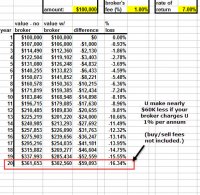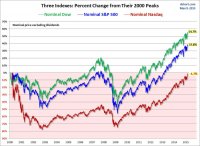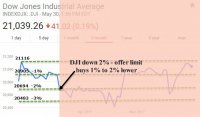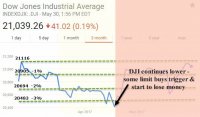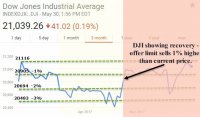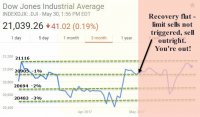hitchicken
Active Member
Good poinr.
Some brokers charge a commission on each trade, some go with a annual percentage fee (usually between 1% and 2%), some do both. There are nearly as many ways brokers make money as there are brokers.
The plot below shows the effect of a 1% annual fee (that's considered low) on an client's holdings over 20 years. It ain't pretty.
I use Merrill Edge. Free trades for maintaining a minimum amount. I also use ETrade. $6.95/trade. Any amount. On this last event, Only 1 stock was bought and sold through ETrade. $13.90 fee.
is your broker making money (commissions) everytime he sells/buys ?????????????????????
https://www.bogleheads.org/wiki/Main_Page start here
https://www.bogleheads.org/forum/index.php a good information page...
If so you are lossing money.
Go to fidelity, vanguard and do your own buying and selling...
Some brokers charge a commission on each trade, some go with a annual percentage fee (usually between 1% and 2%), some do both. There are nearly as many ways brokers make money as there are brokers.
The plot below shows the effect of a 1% annual fee (that's considered low) on an client's holdings over 20 years. It ain't pretty.
I use Merrill Edge. Free trades for maintaining a minimum amount. I also use ETrade. $6.95/trade. Any amount. On this last event, Only 1 stock was bought and sold through ETrade. $13.90 fee.

